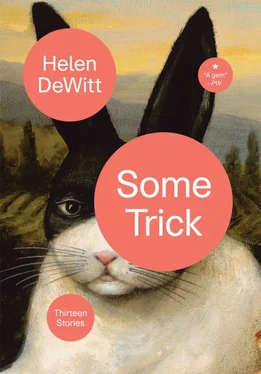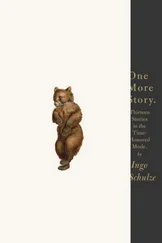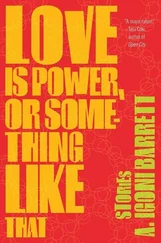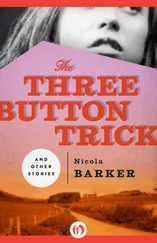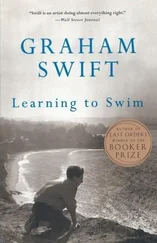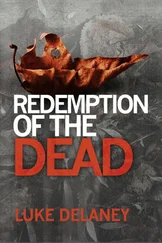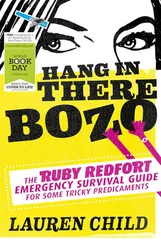She had by now, of course, a certain amount of practice in replying to this story, but still found it hard to know how one should react to an anecdote which showed Trevor in so disagreeable a light. Why did he tell the story? Why did he tell it to her?
‘Have you ever thought of having your own portrait done?’ she took a running leap at what looked the nearest patch of solid ground in the marsh. ‘Or do you have a portrait of yourself?’
‘Only what you have given me.’
What was he talking about?
‘Come and see.’
The adjoining room was fitted up as a small study (Trevor was an editor at the University Press, but also kept up with ‘his own work’). Six-foot-high bookcases surrounded the walls, except for a space left clear for the desk; above the desk, in a Perspex frame, is an enlargement of a photograph of Trevor taken by Lily several months earlier. Lily has a copy of it herself, it is one of the best things she has done. The grain of the black and white, the gaze directed in contemplation quite inaccessible to the camera; the three-quarters profile, permitting the face the interest of the unobserved, neither closing itself off from nor grinning manically at the camera, but reflective, full of its secrets — all these have worked so happily together that the particular features of Trevor — the very flat, broad forehead, the long straight eyebrows, pale grey eyes, the long, thin, mobile mouth, seemed in the very nervous texture of their individuality to be the occasion of harmonious tranquillity.
‘You should have asked me for the negative,’ said Lily. She has given Trevor a print, since it is always nice to have a good picture of oneself; she had not realised how much Trevor would like it.
‘It’s very soothing to my vanity to have this. Mine’s really a very boring face — or else the mirror has been lying for years.’
‘Oh, I don’t know. They say the camera never lies. Of course, there are always passport photos — it makes you wonder if all cameras can be telling the truth.’
‘I sometimes wonder whether the mirror doesn’t tell us only how we see ourselves. Cameras may be truthful about the way others see us — I shouldn’t expect passport photographers to have a particularly agreeable perception of humanity.’
‘Probably not.’ But did she have an agreeable perception of Trevor? Did the photograph not suggest, in any case, that to be interesting was all that mattered? Was hers an interested eye?
‘Have I ever told you about my youthful passion for photography? I was a sort of infant prodigy with a Brownie — even won prizes in national competitions, though in the amateur category, of course. I’ve got the scrapbooks somewhere or other — must show you them some time, if you wouldn’t find it too boring.’
‘I’d love to see them.’
‘I’ll see if I can find them. Can I get you a drink?’
‘Yes, please .’
Lily stood in a corner of the sitting room. She held a glass of dry sherry (she preferred cream). In a mirror above the mantelpiece she saw, mute tones further muted, the backs of the two armchairs, one row of biscuits in a tin, the edge of a teapot in a red tea cosy, a red-and-brown striped squashy sofa in three quarters profile. Reflected, framed, the room had charms foreign to the original, just as an ordinary or even ugly object gains beauty and dignity when painted or photographed. Trevor came in with a fat scrapbook and sat down on the sofa.
‘The reflection gives the room great charm, don’t you think?’ said Trevor. ‘But it depends a great deal on where you stand. Move a little this way, that will give you the best angle of vision.’
She moved a few steps towards the door. Trevor’s knee, an arm resting on the knee appeared with the frame.
‘No, just a bit further over.’
A few more steps, and Trevor came fully into view.
OXFORD, 1985
You reach a stage where they ask you for a biography or a CV. Sometimes it’s for a catalogue. Sometimes it’s for a grant application. And of course, if you’re a photographer, this is alien to your practice. It doesn’t matter whether you use a darkroom or digital manipulation; the image always develops over time, in ways beyond your control. So what does it mean to put a label on this or that event?
Plantinga was born in Berlin in 1956 to an Estonian mother and unknown father, thought to have been a journalist.
You can say that she was given her first camera at the age of 17. That she was working as an au pair in Amsterdam. That it was a Leica; that it was the prized possession of Maarten, dead brother of Matthias, father of the family. It seems as though you should say, she was bitterly disappointed, because she wanted a Polaroid: it’s definitely the case that our timebound relation to technology has been a preoccupation. She has 100 cameras and lenses beyond count. The name Plantinga marks the acquisition of the mechanical eye.
This is the case: when she uses the Leica, she always wonders what dead Maarten would have made of what she sees.
She had read Stanisław Lem’s Bajki robotów in German, Robotermärchen . Robot tales. She could not find it in Dutch. She told the stories to the children, playing robot games. This would turn out to be important.
This is the case: if she had done a degree she could put down the degree.
She took a job as au pair with a family in Oxford. The husband was a barrister, the wife a solicitor. They told her for £30 she could go to lectures at the university. Her English would not have been good enough to do a degree. If she had been doing a degree she would have been tied to a syllabus. When the children were at school she went to lectures on philosophy, on Linear B, on the Umayyads.
There was a Czech dissident, Julius Tomin, who lectured on Plato. He had given illegal seminars on Aristotle in Prague, where he had had to dodge the secret police; a group of Oxford philosophers had rescued him. At first the lectures were crowded, he filled a big hall. Later he was ostracized. He was stubborn in the way that dissidents have to be. He could not teach to the syllabus. He had a controversial theory that the Phaedrus was Plato’s first dialogue. He would give a class in the Philosophy Sub-Faculty and maybe two people would come. The rest of the time he would do something no professional academic could do, he would sit all day every day in the Bodleian. There are signs saying no photography is allowed, but the staff are not always in every room; she could get pictures of this wrongheaded Platonist at work. She could go to all these lectures on philosophy because she was an au pair, and he could give them but nobody would come because they were not useful for the syllabus.
Was the Phaedrus Plato’s First Dialogue? : 1982–88
Of course she took pretty pictures of the pretty town. She sold them for postcards.
She read Calvino’s Invisible Cities . She read Goffman’s Interaction Ritual . She read Crozier’s Le phénomène bureaucratique. It was in the Philosophy Sub-Faculty that she found A. C. Danto’s The Transfiguration of the Commonplace . She took pictures of graduating students; she talked about Linear B, the Umayyads, interaction rituals. She would say: How is it possible for physically indistinguishable objects to be different works of art? The students had lively, engaged, yet poignant expressions: destined for Arthur Andersen, for merchant banks, they discovered too late their lost chance to learn Linear B. Of course these were popular photographs. Of course it was easy to get more commissions. Of course it was easy to be asked to weddings and bar mitzvahs. It was not so easy, of course, to know what dead Maarten would have made of it.
Читать дальше
